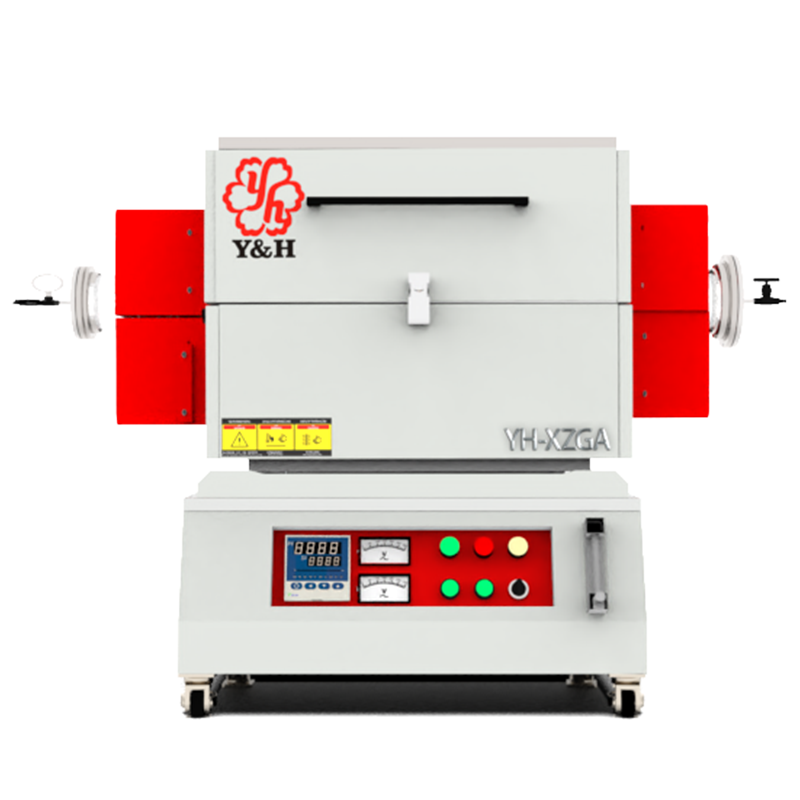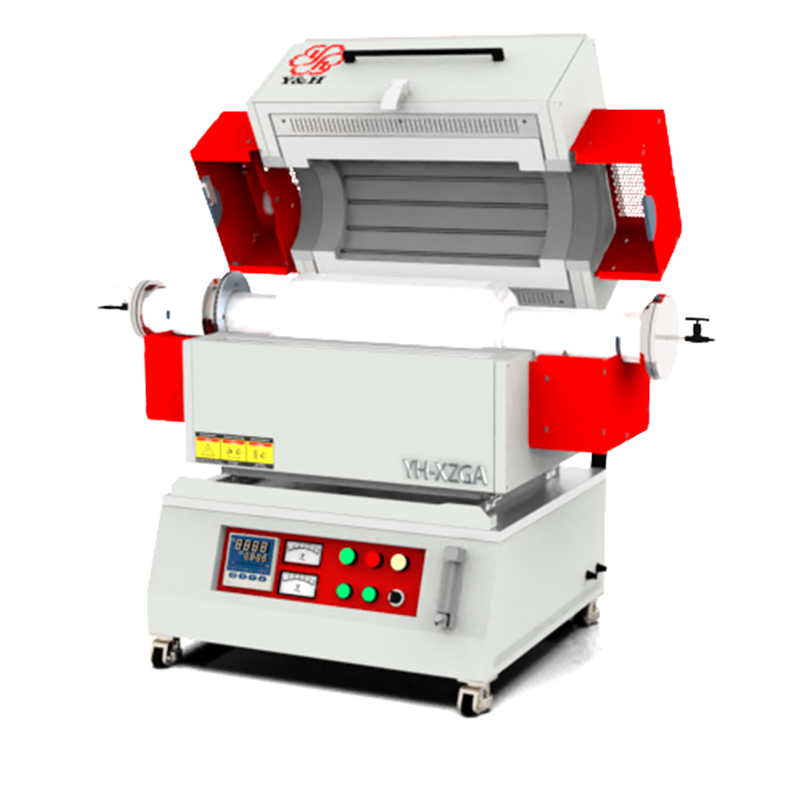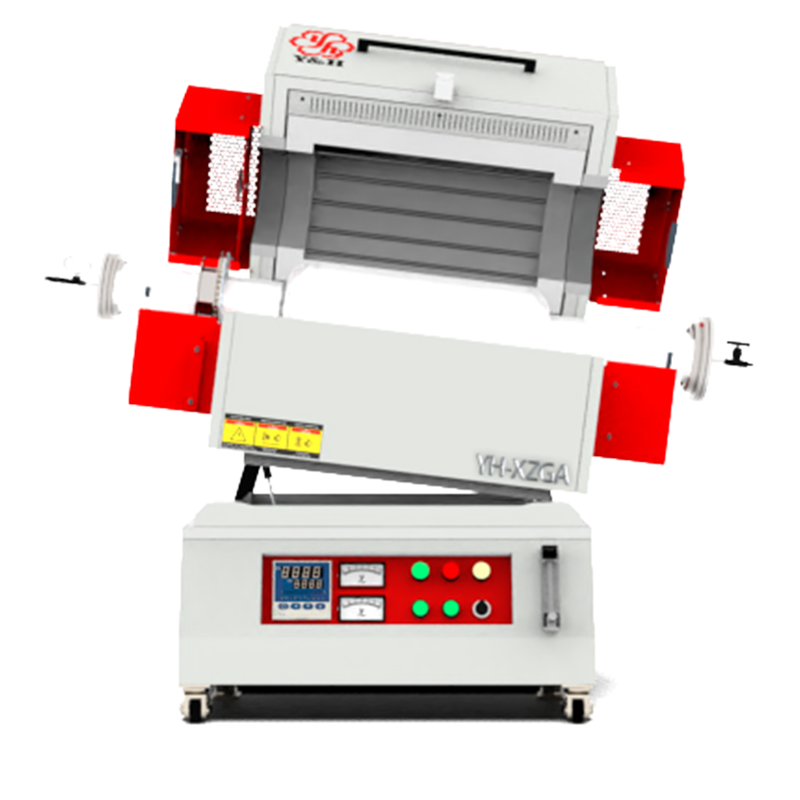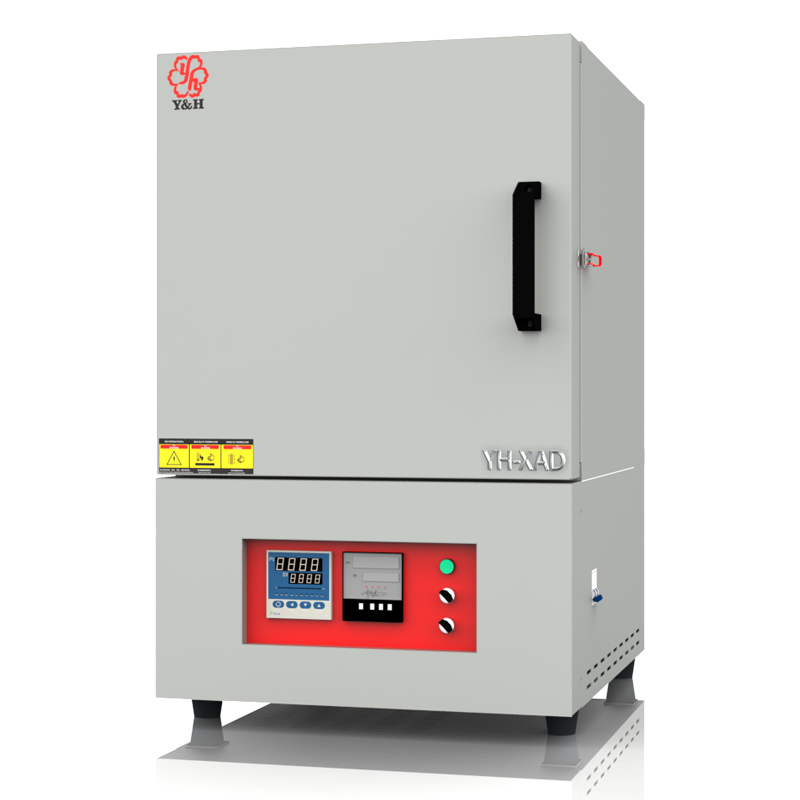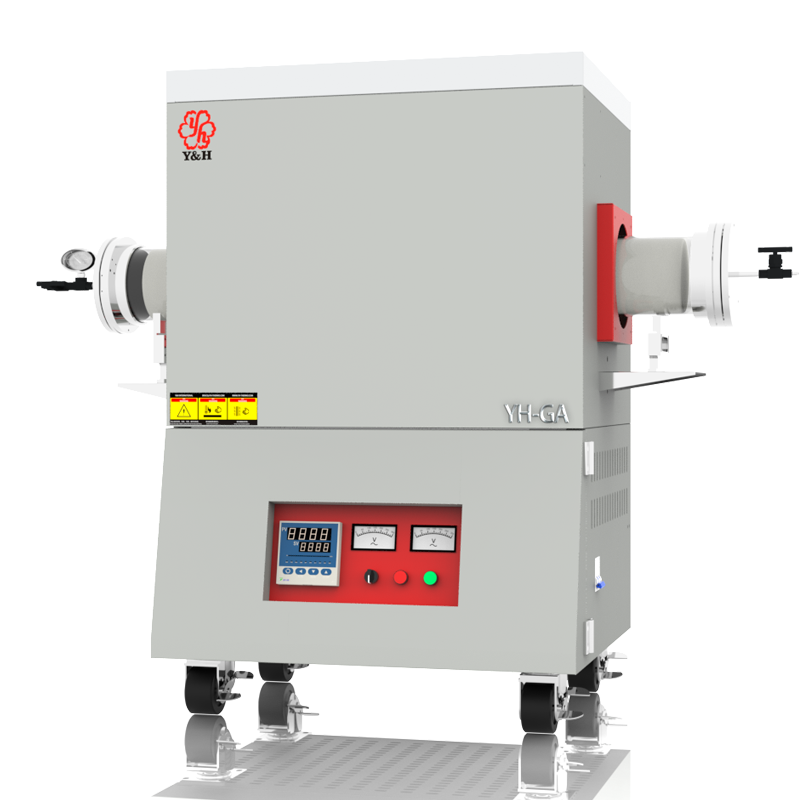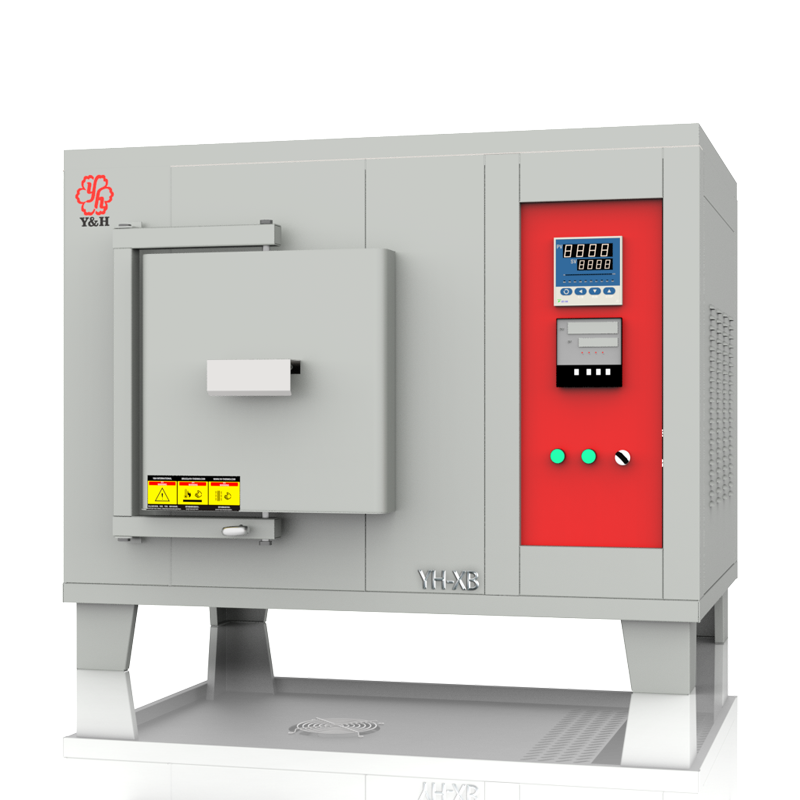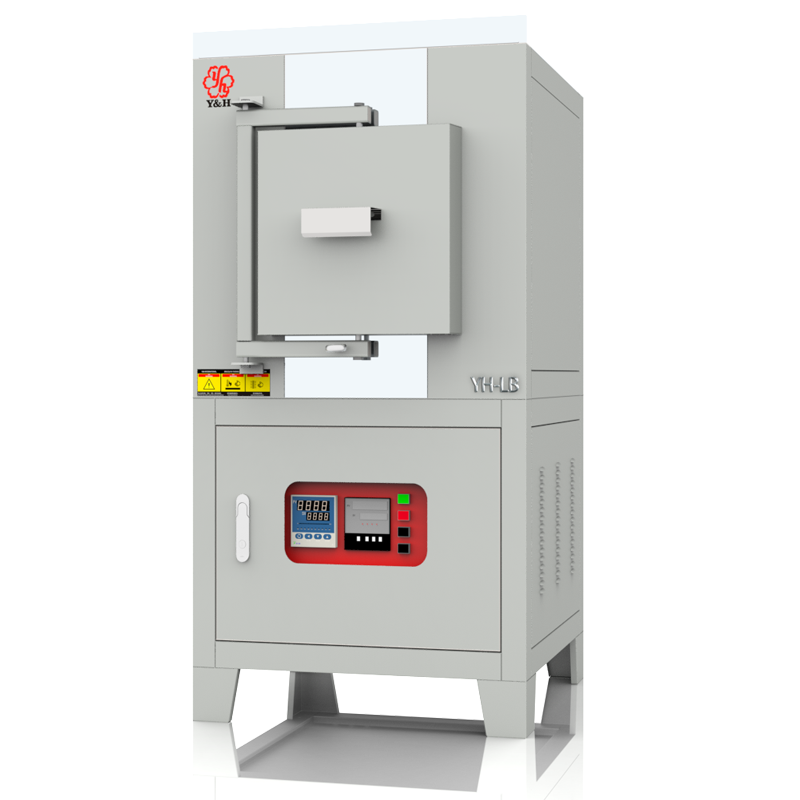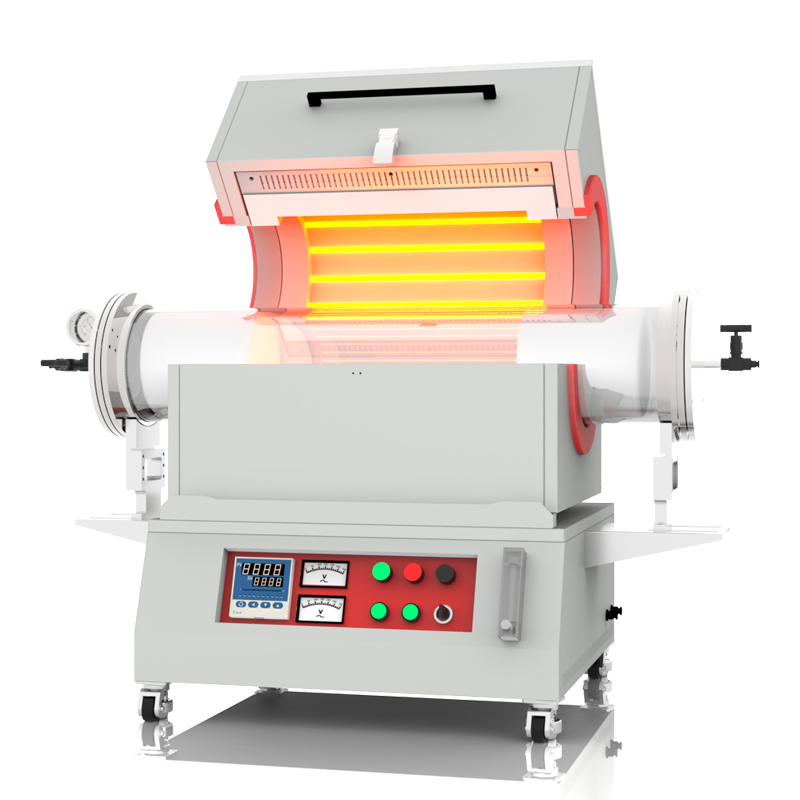YH-XZGA
An inclined rotary tube furnace is a device for heating and treating materials. It consists of an inclined rotating tube in which a variety of materials can be heated and processed. The angle of inclination of the rotary tube is usually adjustable, which helps to control the speed and uniformity of the movement of the material during the heating process.
This equipment is widely used in the fields of chemistry, metallurgy, and materials science, and is particularly suitable for processes that require solid materials to be treated at high temperatures. For example, it can be used for processes such as calcination, sintering, decomposition and synthesis. The design features of the Tilt Rotary Tube Furnace allow the material to be heated uniformly and processed continuously during the heating process, contributing to increased productivity.
The main features of laboratory tube furnaces include:
Tubular Construction: Heating chambers are usually tubular and are usually made of high temperature resistant materials such as stainless steel or quartz or silicon carbide and high purity ceramics. Tubular construction helps to provide uniform heating and can accommodate samples of different shapes and sizes.
Refractory material: The inner chamber is lined with ceramic fiber boards and the outer chamber is filled with ceramic fiber blankets or cotton to insulate against high temperatures and save energy at the same time.
Open hearth: The standard tube furnace hearth can not be opened, can be customized to open the type of hearth, which helps to observe the position of the material into the furnace tube and other advantages, but need to pay attention to the silicon molybdenum rods heated by the high temperature tube furnace can not be done to open the type.
Tilt rotation: the furnace is equipped with a tilt rotation structure, the speed can be controlled, usually 0-20 turns per minute, tilt angle of 7 °, if special requirements can be customized
Heating elements: The interior is filled with heating elements, usually resistance wires or silicon carbon and silicon molybdenum rods. These heating elements generate high temperatures and raise the temperature in the heating chamber to the desired level.
Temperature Control: Tube furnaces are equipped with a temperature control system (thermostat) to precisely control the temperature in the heating chamber. This helps to achieve precise control of the sample heating process.
Safety Features: Laboratory tube furnaces are usually equipped with a number of safety features such as overheat protection, safety door locks, etc. to ensure the safety of the experimental process.
Air and Vacuum: Tube furnaces include an air inlet and a 4L mechanical vacuum pump as standard, but can be customized if a larger vacuum or number of air circuits are required.
Vacuum pump selection: For the different vacuum requirements of the tube furnace, Rongke electric furnace in the basic rotary vane pump on the basis of additional customized diffusion pump or molecular pump unit, the maximum vacuum up to 0.0001Pa.
Product expandability:
The number of gas lines: the number of gas lines can be customized according to customer needs, from one way to multiple inlet, the standard has a float flow meter, can also be customized digital display and other flow meters.
Atmosphere: Tube furnaces can be fed with a wide range of atmospheres, from standard inert gases to customized gases such as hydrogen, chlorine and others.
Touch screen control: In addition to the standard temperature controller control, through different customer needs, can be customized touch screen control, data visualization at the same time, easy to operate, data can be downloaded at any time archiving. Reduce the traditional paper recorder cumbersome.
Tilt and rotate: Tube furnace can be customized in the structure of the tilt and rotate, etc., to facilitate customer control for the process and product sintering process, vacuum can be considered magnetic fluid or rotary seal.
Feeding Methods: Tube furnaces can be customized with tilting/vibratory feeding methods in the absence of atmosphere and vacuum sintering to facilitate continuous product processing.
Standard specifications:
Tube furnaces for temperatures below 1200°C, tube diameters from 30-160mm, and heating zone lengths above 900mm can be customized.
For high temperatures above 1500℃, the maximum size is 80mm tube diameter and 1500mm heating zone length, because of the limitation of furnace tube material, there is no bigger and longer solution for the time being.
For details and solutions, please get in touch with us.
In general, tube furnaces are widely used in scientific research, chemical experiments, material research, biological experiments and other fields. They can be used for sample heating treatment, dissolution, drying, sintering and other operations, providing a stable and controllable heating environment, which contributes to the smooth running of the experimental process.
